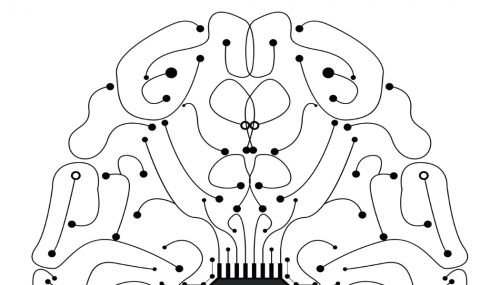All
How to Read Your Credit Card Statement
by Dan Rowe, Hoot Payment Solutions

Credit Card Statements come in many shapes and sizes. Some are as few as two pages while others can be over 50 pages. Each processor’s statements have their own look and feel, but the information covered therein is typically the same. However, no matter which format you have, it seems none of them are easy to decipher at first glance.
The good news is that by the time you finish this article you’ll be able to answer these four key questions:
- What is my “Card Mix” and how does it impact my costs?
- What is my “Effective Rate”?
- Which fees can I control and where does the money go?
- Am I set up correctly to take advantage of the rate benefits available to me?
Your “Card Mix”
Your “Card Mix” is a breakdown of the types of cards your customers use to pay. Visa credit cards are the largest card brand, with approximately 40% of the market. Mastercard is next, making up around 25%. Debit cards make up about 20% of transactions while AMEX makes up about 10% and Discover about 5%.
Fuel oil and propane dealers are allowed special pricing. However, each card brand is not equal. The discounts from Mastercard and Discover are better than what Visa has to offer. And while American Express does not offer discounts, with their new Opt Blue program, AMEX is more in-line with Visa’s costs.
The average cost per transaction for a fuel energy marketer who is set up correctly is as follows:
- Debit Cards: $0.42
- Mastercard & Discover: $0.65 – $1.50
- Visa: $5.77 – $9.70
- American Express: $9.20
Based on this information, it is easy to see that the more debit, Mastercard and Discover cards you take, the lower your costs will be. And if you live in an area where American Express is the preferred card, your costs will likely be on the high end.
Your “Effective Rate”
Your “Effective Rate” is a barometer of your account. However, looking at one month alone will not paint a complete picture. It is recommended that you keep a running tally of your effective rate on a monthly basis and then look at it annually to see how seasonality and other factors impact it. Proper account set-up, your card mix, how you take the cards and what information is captured at the time of transaction are all contributing factors that help determine the range of your effective rate.
In our research, we’ve found the effective rates in the fuel energy industry average between 1.20% – 1.75%. If you do not fall in this range, it could be due to a number of factors, such as: 1) improper account setup; 2) inflated rate; or 3) perhaps the demographics in your area lead to a larger number of American Express transactions in your card mix.
How do you calculate your effective rate? It’s simple. Grab your last 12 statements and create a spreadsheet that lists out by month your volume and your cost. Then add a third column and label it “Effective Rate.” You can easily calculate the effective rate for each month by dividing your cost by your volume. So, if you processed $300,000 in credit cards last month and your cost was $3,720, then your effective rate was 1.24% and you are set up well and have a good card mix. On the other hand, if you processed $300,000 in credit cards and your cost was $5,460, then your effective rate was 1.82% and you are on the high side and might want to investigate why.
Processing Fees
There are many layers involved in a credit card transaction. Each layer/company needs to be paid. So, when you look at this section of your statement, you will see many line items with unrecognizable names like NABU, Kilobyte Fees, Dues & Assessments. These are the fees charged by the card brands, issuing banks, acquiring banks and merchant service providers. They are all an essential part of the process. Most of these fees are fixed costs that are not negotiable. One area that is negotiable is with your Merchant Service Provider (MSP). Your MSP is the company that services and supports your account. It passes along all the hard-fixed costs and then charges a small percentage (called a discount rate) and a transaction fee. Discount rates, transaction fees and most monthly fees are the areas where you may be able to save.
“How can I tell if my account is inflated or fairly priced?” Most fuel oil and propane dealers we speak with have a discount rate in the range of 18-35 basis points (0.18% – 0.35%). They then pay a transaction fee of around 10 to 20 cents and monthly fixed costs between $25 and $55/month. It is important to note that not all the costs associated with processing show up on your processing statement. Most of you also have an account at a gateway like authorize.net or Network Merchants, so you should include these totals as well.
When looking at your negotiable fees, one thing to bear in mind is that these are the smallest part of your fees (or at least they should be). The company that supports and services your account has fees and obligations they need to cover, and they need to make a profit to ensure the best level of service and support for your account. Based on our findings, there is a good chance your current provider may have inflated costs. The more volume you process, the more leverage you will have to request a reduction in your rates.
The Right Set-Up
We’ve saved the best for last. If you take nothing else from this article, this is the paragraph you don’t want to skip. Fuel oil and propane dealers are eligible for some of the lowest possible pricing available. However, if you are not set up correctly, you will not see the benefit of utility and emerging market rates. If you are not working with a payment partner that specializes in credit card processing in the energy industry, it is very likely they do not know the secret to making sure you qualify for all these benefits. We frequently see statements from the big banks, and the fuel dealer is not set up correctly. We sometimes see they are getting the benefit from Mastercard but not Visa or vice versa. Often, they aren’t set up to get the benefit on either. To make a long story short, there is a good chance your bank or MSP doesn’t know there is a better way to set up your account and is costing you money as a result.
How can you tell if you are getting the correct rates from Visa and Mastercard? Pull out your statement and flip to the section labeled “Interchange Charges.” Under Mastercard, you should see most of your transactions qualifying at the “Utility” classification. You can tell by seeing descriptors with “Utility” in them, as well as seeing no discount rate and instead just a flat transaction fee of $0.65, $0.75 or $1.50. With Visa, instead of looking for “Utility”, you will be looking for “CPS Sel Mkt 2.” This is the descriptor for the Emerging Market classification. The rate on this is 1.43% + $0.05 per transaction. If you do not see most of your Visa cards going to emerging markets or your Mastercard and Discover cards going to Utility, then you are not set up correctly. And if you are not part of American Express’ Opt Blue program, you should ask your MSP about it.
Related Posts
 What’s Next in Boiler Technology
What’s Next in Boiler Technology
Posted on June 25, 2025
 Data Delivers!
Data Delivers!
Posted on April 28, 2025
 Harnessing Payment Data to Increase Profitability
Harnessing Payment Data to Increase Profitability
Posted on March 10, 2025
 DeepSeek Is Our AI Wake-Up Call
DeepSeek Is Our AI Wake-Up Call
Posted on March 10, 2025
Enter your email to receive important news and article updates.
